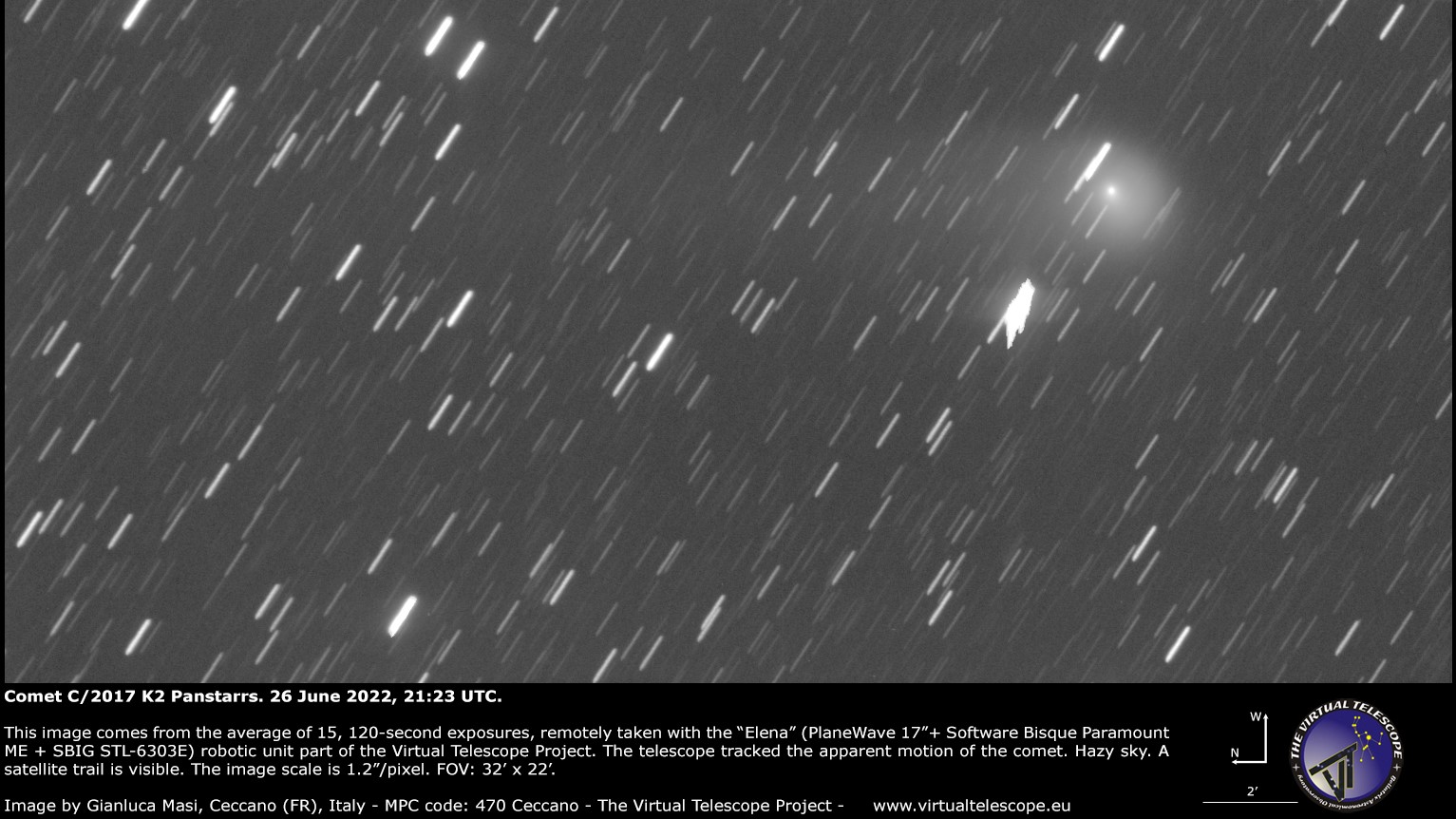Goodbye, Comet K2! Next stop: closest approach to the sun
The comet is past Earth, but may grow brighter as it approaches the sun in December.

A megacomet has just passed safely by Earth, but there's still a chance it will grow brighter through the summer as it reaches its closest approach to the sun in December.
Comet C/2017 K2 (PANSTARRS), called K2 for short, made its closest approach to our planet on Thursday (July 14). It passed 168 million miles (270 million kilometers) from Earth (beyond the orbit of Mars).
This distant approach meant that K2 had a bit of a dim showing, despite its sheer size. The megacomet was first spotted in 2017 by the Panoramic Survey Telescope and Rapid Response System (PanSTARRS) in the outer reaches of the solar system.
But there's more to come, as K2 now continues its journey to the sun and will make its closest approach to the star around which it orbits, the so-called perihelion, in December. The comet, which is visible these days by large amateur telescopes, may brighten up in the warmer environment closer to the sun and move into average binocular range if we are lucky.
Related: The massive, strange Comet K2 is touring the solar system, surprising scientists as it goes
The first observations of the comet revealed a potentially large nucleus (or core) and a huge envelope of gas and dust. At that time, the comet was between the orbits of Saturn and Uranus, about 1.49 billion miles (2.4 billion km) from the sun, which is about 16 times farther away than Earth is from the sun. The fact that K2 already sported the gaseous coma surprised scientists, as this deep in the solar system, temperatures are so cold that comets, mostly made of water ice, are supposed to be as still and dead as rocks.
Scientists still debate how big the comet is. The Canada–France–Hawaii Telescope (CFHT) suggested K2's nucleus could be between 18 and 100 miles (30 to 160 km) wide, but data from the Hubble Space Telescope showed it might be only 11 miles (18 km) wide.
Get the Space.com Newsletter
Breaking space news, the latest updates on rocket launches, skywatching events and more!
Comet activity is always tough to predict, as we cannot say exactly how the sun's heat will affect K2 or whether it will survive the passage at all. Now poised at about magnitude 7 or 8, the comet should remain viewable in telescopes through at least the rest of the summer. Naked-eye visibility is magnitude 6, by comparison.
Perihelion will happen on Dec. 19 and so far, the comet has been getting brighter as it moves toward the inner solar system. So we can only hope that in the coming weeks, the comet will get a little brighter so that more people will be able to see it beyond the pictures coming in from larger observatories.
Perihelion will also be distant, as K2 will be about 1.8 astronomical units from the sun (nearly double the distance between Earth and the sun), when it makes the closest approach.
Follow Elizabeth Howell on Twitter @howellspace. Follow us on Twitter @Spacedotcom and on Facebook.
Join our Space Forums to keep talking space on the latest missions, night sky and more! And if you have a news tip, correction or comment, let us know at: community@space.com.

Elizabeth Howell (she/her), Ph.D., was a staff writer in the spaceflight channel between 2022 and 2024 specializing in Canadian space news. She was contributing writer for Space.com for 10 years from 2012 to 2024. Elizabeth's reporting includes multiple exclusives with the White House, leading world coverage about a lost-and-found space tomato on the International Space Station, witnessing five human spaceflight launches on two continents, flying parabolic, working inside a spacesuit, and participating in a simulated Mars mission. Her latest book, "Why Am I Taller?" (ECW Press, 2022) is co-written with astronaut Dave Williams.









